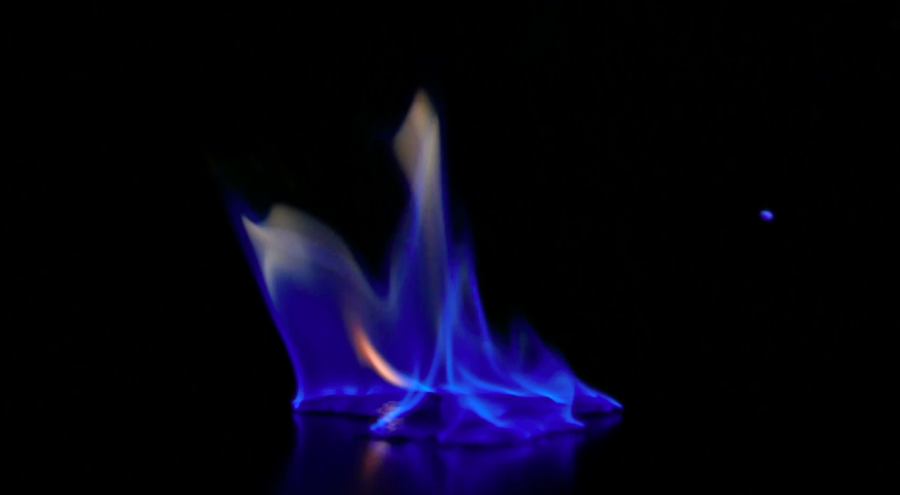Co-authored by Jennie Chen
The crisp, clean smell of hand sanitizer fills the room as students eagerly gather around a familiar lab table on Oct. 22 in B101. A match is lit and placed on the table. As a steady blue flame slowly erupts from the hand sanitizer on the table, Science National Honor Society members murmur excitedly at the illumination created in the otherwise dark room.
This simple experiment demonstrates the science behind combustion. According to activities manager senior Shaili Davuluru, the hand sanitizer contains ethyl or isopropyl alcohol, which, when ignited, creates a blue flame rather than a typical orange or red. This experiment can be recreated with different salts to produce different colors.
The first step was to spread the hand sanitizer evenly on the fire-proof tabletop. Students experimented with different thicknesses and lengths to create different effects with the flame.
Next, they lit a match and placed the fire on top of the hand sanitizer, waiting until it caught on fire before turning off the lights.
The final result was a blue flame. The outcome of the experiment pleasantly surprised president senior Julia Cho, who was amongst the excited students.
“I thought it went super well,” Cho said. “I guess we didn’t know what to expect because although we saw videos on Youtube, we weren’t sure if [the experiment] was going to work as well.”
The experiment was also a way for students to gain more exposure to science through hands-on experiences. Member sophomore Aditi Gnanasekar learned about combustion and chemical reactions to supplement her normal chemistry class.
“It was very enriching because we had a lot of freedom with what we were doing,” Gnanasekar said. “It wasn’t time controlled or anything so we could have fun, and we did.”
















